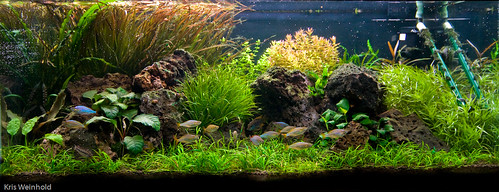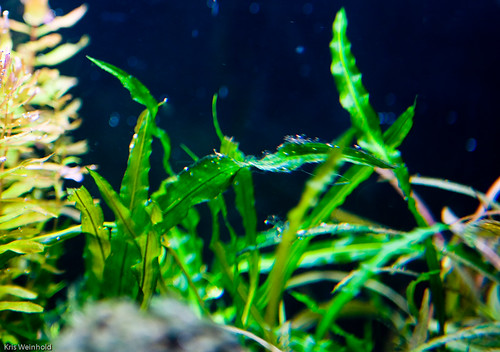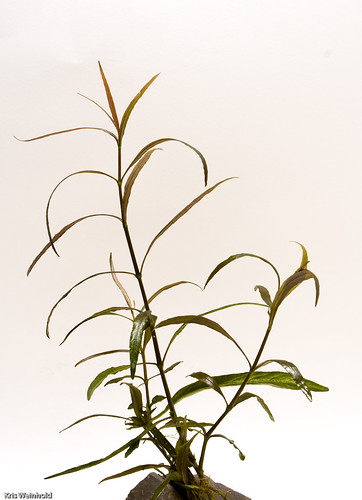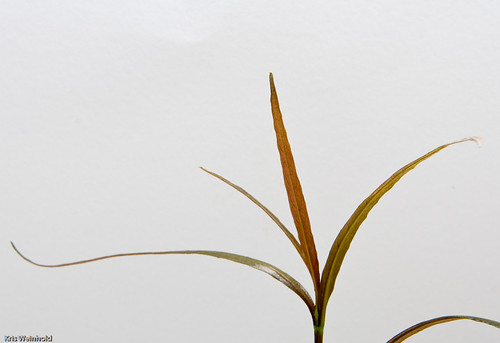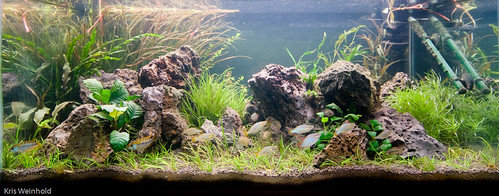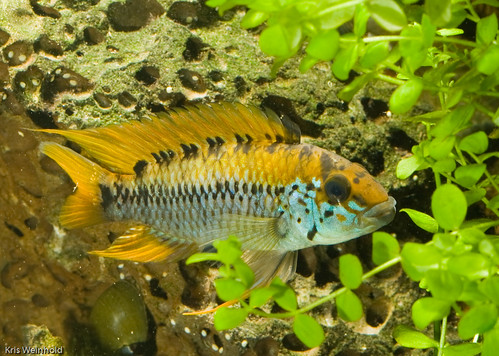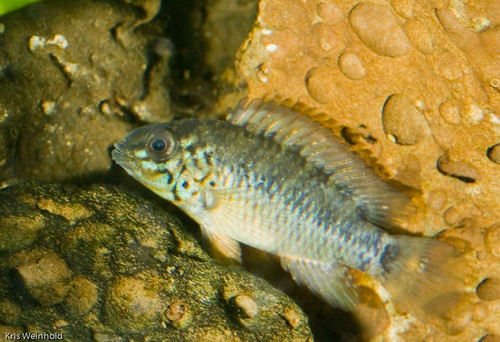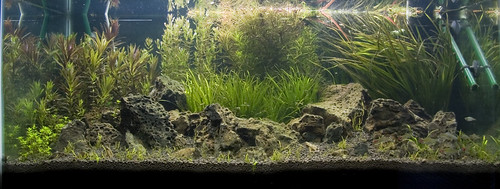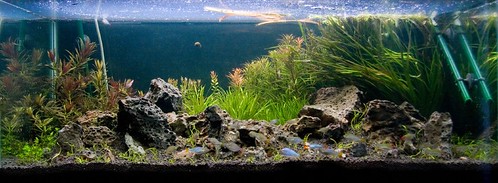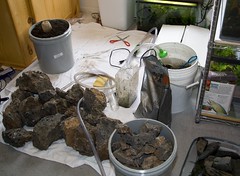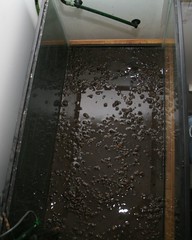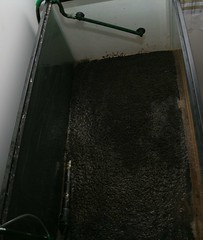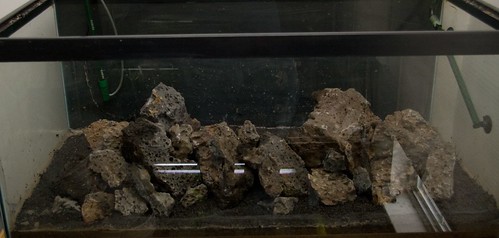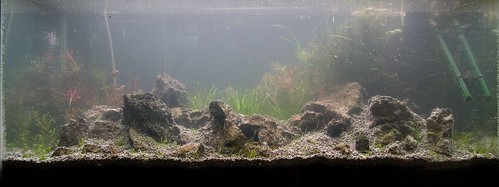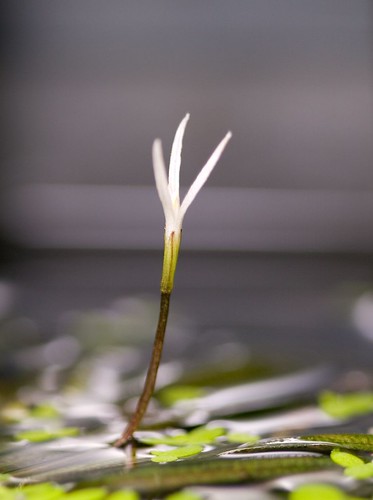40G Scape – 3.5 Weeks
November 1st, 2007Here’s my 40G tank after being setup about 3.5 weeks ago.
The Blyxa aubertii is still plagued by some hair/staghorn algae, but that’s because I still haven’t gotten a powerhead to add some more flow to that part of the tank. The Rotala macrandra var. ‘green’ is looking fantastic in the back middle, as is the Blyxa japonica. I’m still trying to determine whether or not I’m able to use the Potamegeton sp. from Florida as a scapable plant. It’s to the right of the R. macrandra ‘green’ below.
It grows a bit too fast to easily time for a photo, but in a huge mass of stems, I think it would look like a stand of crypts with red/browns/yellows/greens throughout. When we first collected it, it looked very much like a bed of crypts with the leaves coming straight from the substrate, where the roots spread by runners. I’ve yet to replicate that growth in my tank, where the plant grows much more as a stem with a few long leaves coming off at alternating nodes. A foot long stem to the surface might only have 3-4 leaves, each of 4-5″ in length. I guess that’s why they called Potamegetons “pond weeds.”
I’d love to hear comments about how the tank is progressing, and would welcome any suggestions for the future.
